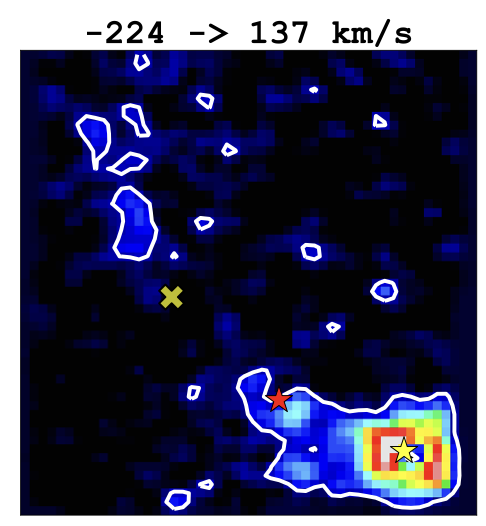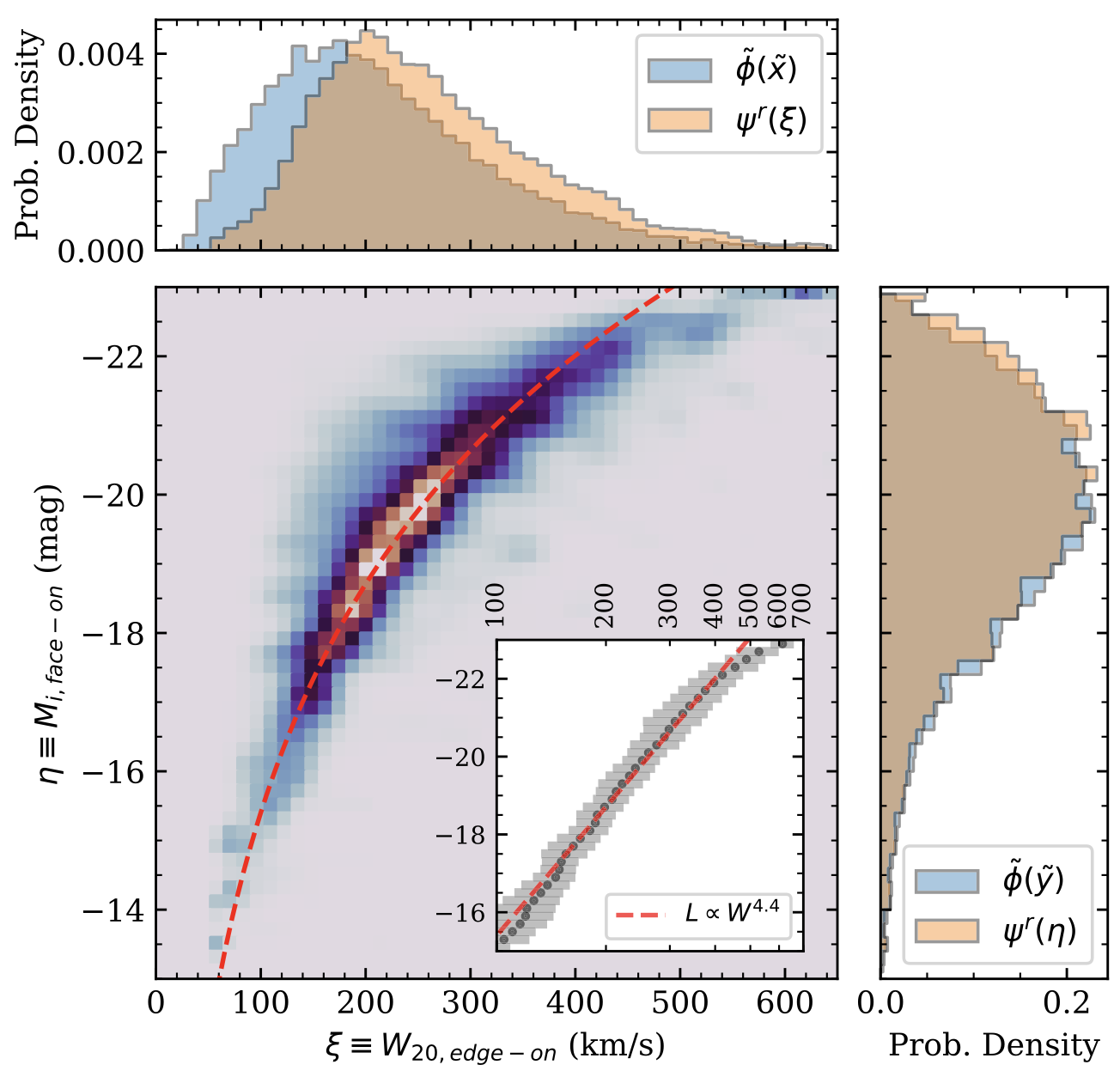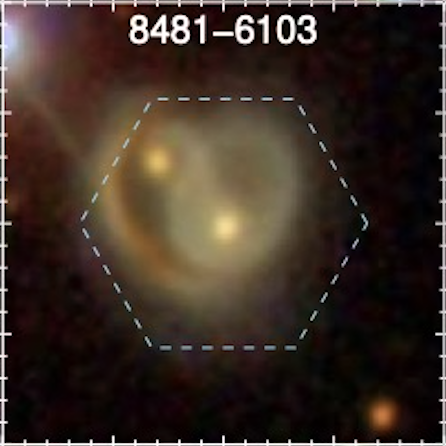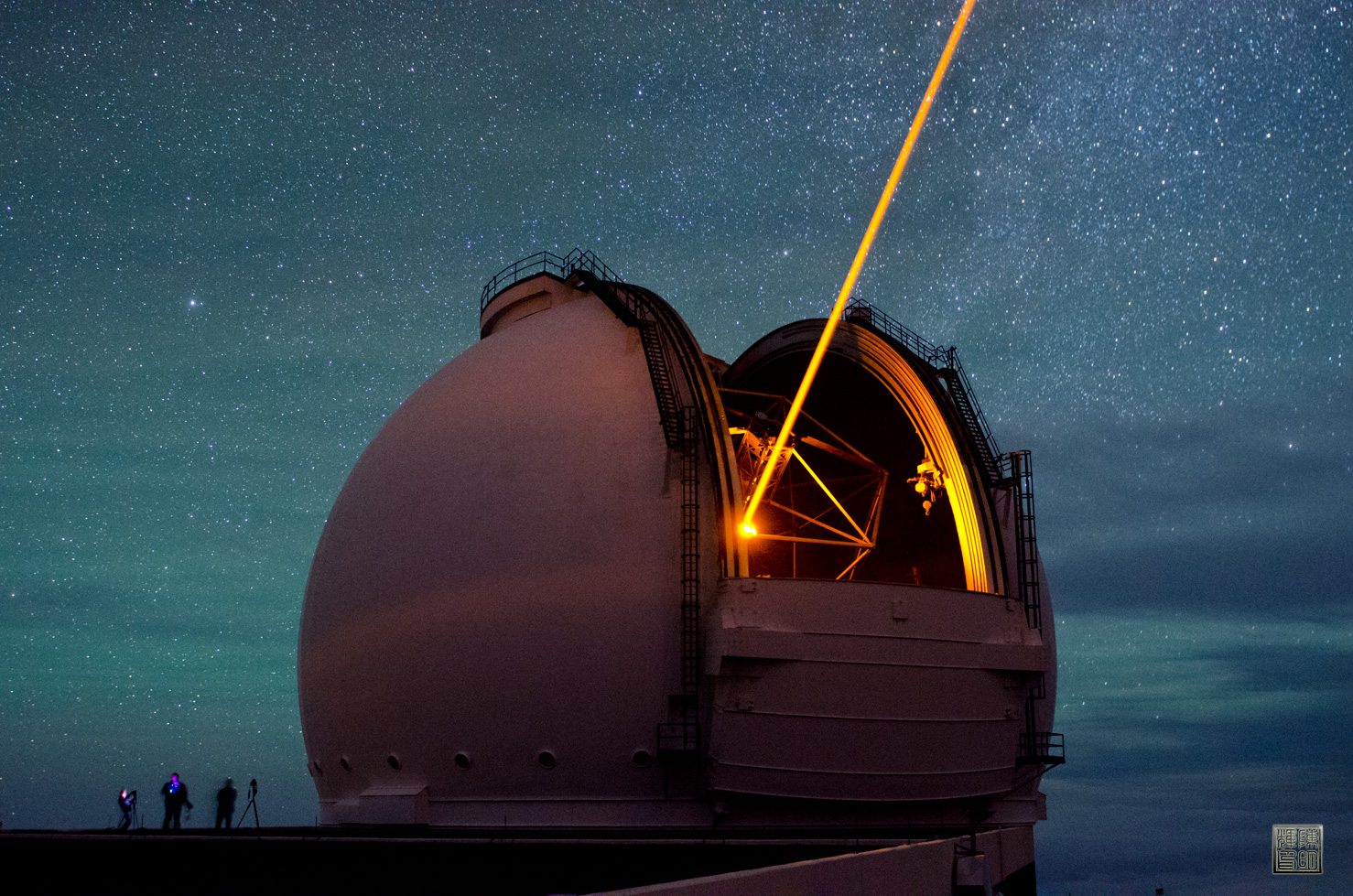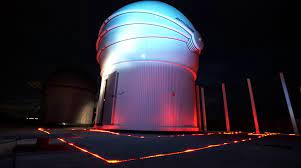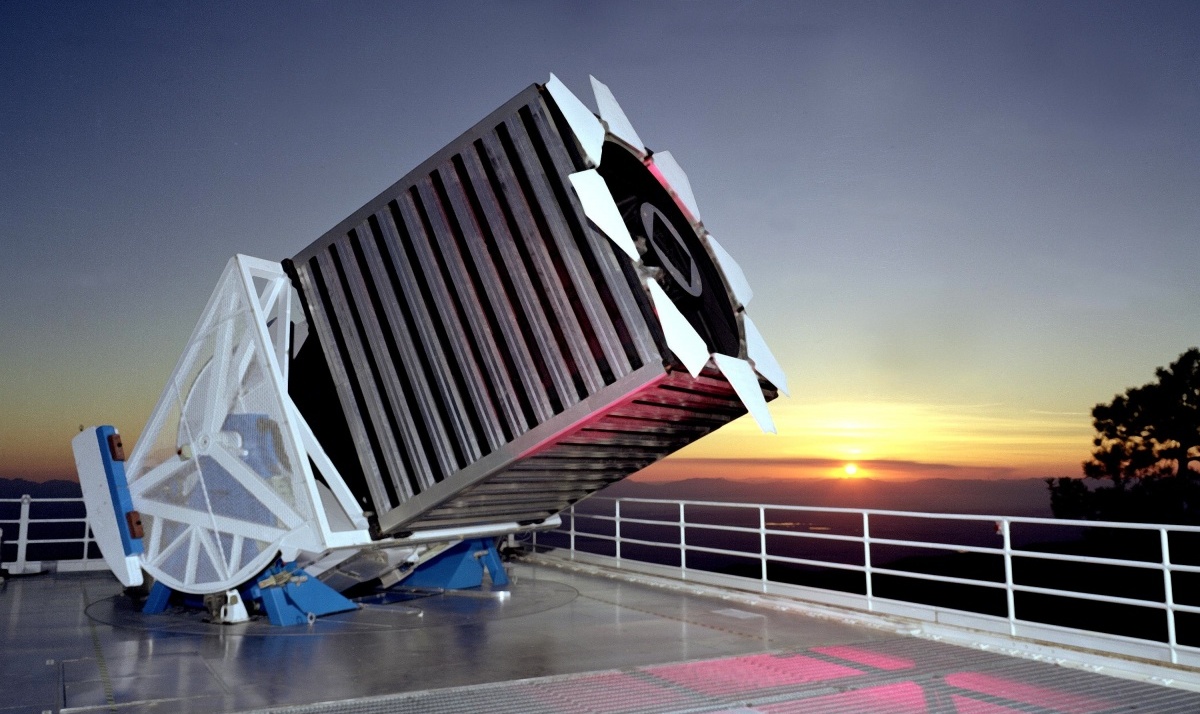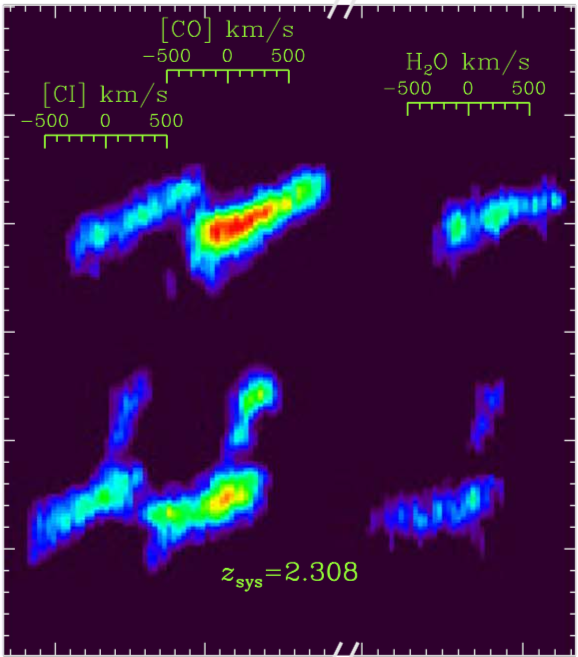Mitigating Malmquist and Eddington Biases in Latent-Inclination Regression of the Tully-Fisher Relation
The Tully-Fisher relation (TFR) is an empirical correlation between luminosities and rotation velocities of disk galaxies. Since rotation velocity can be measured independent of distance, this correlation allows astronomers to use disk galaxies as standardizable candles for distance measurements. Once the correlation is calibrated using distances from Cepheid variables in...
[Read More]

